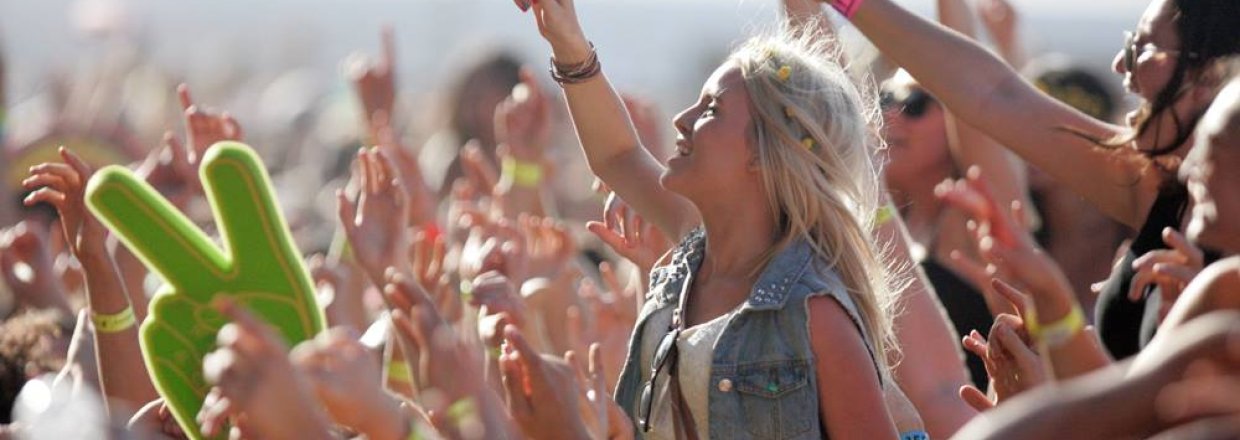I understand from my clinical training, but also from my own experience how much demand attending a festival can put on your body.
Back pain, leg pain, calf problems, knee pain and neck pain are all common and can be due to a number of different factors, from sleeping positions to lifting heavy equipment.
The good news is that there are ways you can improve your chances of having an injury and pain free festival…
1. Prepare to move – a lot!
If you have a desk based job or live a sedentary lifestyle, being at a festival for four days can be a sudden, huge increase in activity and shock for your body.
Out of interest I checked the health app on my phone after Glastonbury last year and I totalled around 90k or 56 miles by the end of the weekend.
You wouldn’t go on a three day 56 mile hike without any training, preparation or proper footwear, so it’s crazy when you think that we just turn up in wellies and shorts and do that for a full weekend.
I’m not suggesting that you start training for a festival, but obviously being as active, strong and healthy as you can beforehand is going to work in your favour.
You also need to be realistic and prepare if you have an injury or pre-existing condition – see tip 7 below.
2. Wear sensible footwear
Wellies are heavy and clumpy, which can cause you to move around differently and affect the biomechanics of how your body functions as a whole.
Hiking boots (if it’s wet) or a good pair of trainers (if it’s sunny) are better options as they’re much more supportive and are going to help to take the impact of all that walking.
Obviously, if it’s torrential downpour then you may want to switch between wellies and hiking boots to give them a chance to dry off.
3. Invest in sleeping equipment
It’s not always easy to sleep at festivals, but sleep gives your muscles a much needed chance to relax whilst your body works to repair and heal itself.
If you’re on a really hard surface, you’re going to be waking up throughout the night and moving into uncomfortable positions.
Invest in making your sleeping area more comfortable if you can. This could be something like a decent inflatable roll-matt or a more expensive option like an airbed.
4. Stay hydrated
If you become dehydrated your body’s tissues are more susceptible to injury.
Make sure that you drink enough water throughout the festival and especially if you are in the sun all day and drinking alcohol.
5. Make the most of free activities
Many festivals offer free yoga sessions, massage and other activities.
If you can find the time or wake up early enough, then taking part in these can be a great way to rest and recuperate after a night of partying.
6. Lift carefully
Transporting heavy equipment, carrying a rucksack and even lifting others onto your shoulders can easily leave you injured or in discomfort.
Be mindful of how you are lifting and carrying things, and don’t overload yourself.
Think about how you’re going to shift your equipment to and from your car and campsite. If it feels like too much, then two trips are going to be better than one. Trollies can also be helpful.
7. Prepare if you have an existing issue or injury
If you’re recovering from an old injury or know that you have a pre-existing issue, for example a weakness in your ankle, then think about how you are going to manage this beforehand.
If you see a physiotherapist in advance they will be able to offer you advice about building strength in the area where you will need it and how to manage your issue once there.
It can also help to plan for a flare-up, for example by packing compression bandages and pain medication with the advice of your doctor or pharmacist.
8. Stretch to relieve tension
These are great stretches that can help to relieve common areas of tension either while you are at the festival or once you get home.
Calf stretches:
Knee hugs:
Knee rolls:
Neck stretches:
9. Rest after the festival
Once you get home make time to rest and get a good night’s sleep.
Putting your feet up can help to relieve tension in your legs and feet.
Many people also use ice and heat to relieve aches and pains, for example in the neck and back.
10. Don’t ignore an injury or pain that doesn’t subside
All festivals will have paramedics on hand and a medical tent.
If you are concerned that you have sustained an injury or if you are struggling to move, you should rest the area and seek help from them.
The majority of what we call acute soft-tissue injuries, which includes sprains and strains, will feel better within a few days and recover within 4 weeks with the right care and rest.
If it has been more than a week since the festival and you are still experiencing pain or the problem isn’t getting better, then see a physiotherapist.
They will be able to identify the underlying cause, accelerate your recovery and provide you with relief from pain by using manual therapies such as soft-tissue massage.
